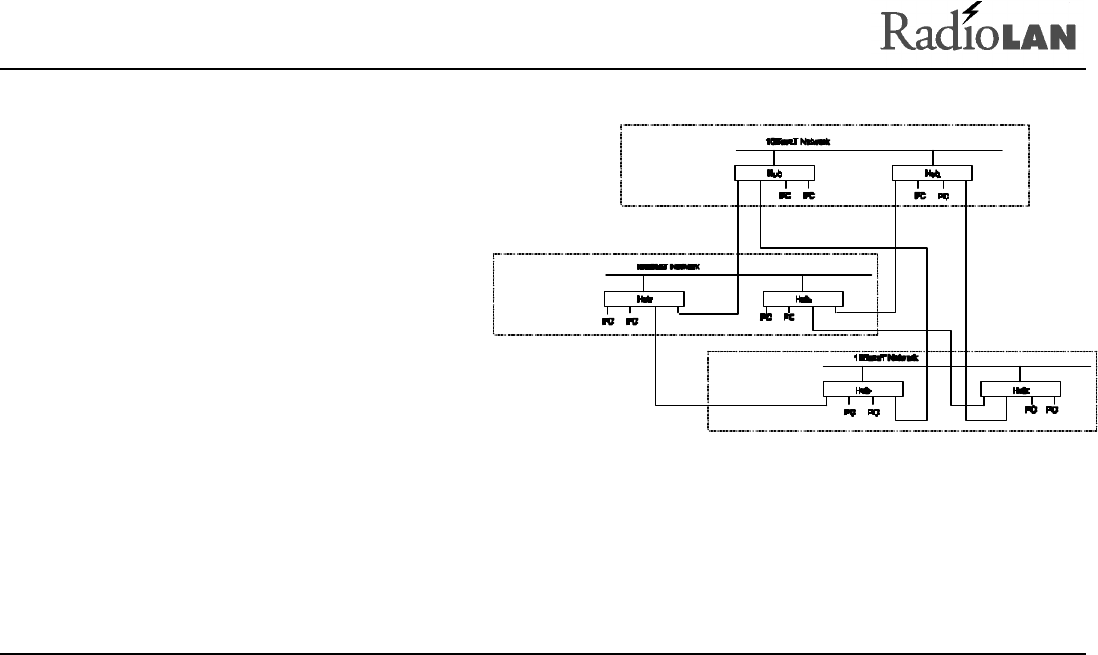
890-007 Rev. A 01/28/99 Page 62 © 1999 RadioLAN, Inc.
Network 1
Network 2
Network 3
Spanning Tree Parameters
When you connect two or more networks to increase the
number of users, or enhance the ability for users of two (or
more) networks to communicate with one another, you can
control the routing of data to maximize the efficiency of the
traffic between the networks.
Bridging characteristics allow you to route
necessary messages between two networks
and to eliminate unnecessary traffic to other
networks when messages are only intended
for use within the local network.
Furthermore, you can set up redundant paths for bridging,
which reduces the potential for data path losses due to bridging
network outages. You can establish a path redundancy for bridging
networks and redundancy for ports on the same
bridging network.
Path redundancy creates a loop by means of which data packets can potentially travel indefinitely if the bridge
root network were unable to dynamically “prune” pathways between each network. The SPANNING TREE
PARAMETERS PAGE allows you to set configuration items that allow the establishment of the root, redundancy of
root networks, redundancy of root network ports to other networks, and dynamic pruning between network loops.
Figure 38: Bridging Networks


















